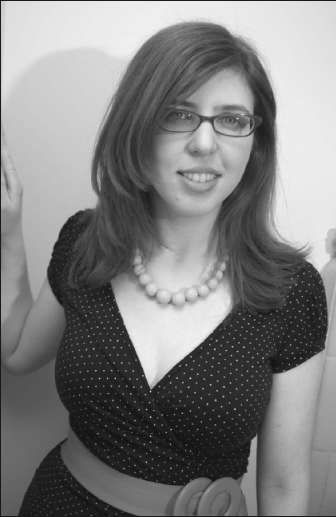By Rebecca Cathcart
If you’ve seen The Villager’s sister paper Chelsea Now, you’ve likely seen the irascible cartoons of Mikhaela Reid, who has drawn editorial strips for the paper since its inception. (Her work also appears in The Boston Phoenix, Ms., Campus Progress, Bitch, and The Guardian.) Her politically charged cartoons are eye-catching and informed, and her subjects disturbingly familiar: She’s portrayed everyday New Yorkers in combat with exorbitant rents, gay couples subjected to bigotry masquerading as “family values,” even Jerry Falwell sweating in hell.
Reid met up with The Villager on her 27th birthday last week for lunch. As the restaurant filled with people during the noon rush, Reid’s confident voice rose above the noise as she discussed life as a cartoonist and her first book, “Attack of the 50 ft. Mikhaela,” which will be released on June 9. Reid, along with her fiancé and fellow cartoonist Masheka Wood, will host a book release party June 12 at 7 p.m. at Bluestockings (172 Allen Street between Stanton and Rivington). For details, check out her website and blog, www.mikhaela.net.
Rebecca Cathcart: In addition to being a retrospective of your work from the past ten years, would you say that this book is an overview of politics in America since the late ’90s?
Mikhaela Reid: It’s a little ‘memoirs of the Bush administration.’ I started cartooning professionally in 2002 while I was still in college. So my cartoons are kind of a chronicle of post-9/11-Bush-administration-scariness. It’s been interesting as a cartoonist to watch Bush’s popularity. As his popularity declines, my cartoons’ popularity increases.
Your early comics where more text heavy than your more recent work. How have your cartoons changed over the years?
When I first started cartooning, I had no idea what I was doing. I was basically doing a visual column. And I was a very, very concerned and serious young woman. I had a sense of humor, but I was so angry.
In the beginning, I was venting more. But I did have some silly stuff. My first cartoon for the Boston Phoenix was a mock advertisement for a pharmaceutical called “Bomb Iraq.” It was like: “It’ll solve all your problems, your popularity is slipping.” And that was an early use of humor. [Also] I would just draw myself being angry. I’ve really kind of stepped away from that. I’m more of the woman behind the curtain, and I use less text.
Visuals can have more of an impact than words. I had a cartoon called “Every Sperm is Sacred.” It was about the move within the anti-choice movement against any kind of birth control. So, I had this silly cartoon about a look back at the “sperm rights movement.” It’s narrated by a talking sperm and shows sperm protesting. At the end, as a happy ending for the sperm, I drew women tied up on a conveyor belt and being injected by this machine called “The Sperminator 3000.”
It was a little too raw for one of my papers, and I don’t blame them. I mean, if I ran a family newspaper, I probably wouldn’t print that either. But that’s something you probably couldn’t have gotten by just writing it out in text.
Are you trying to grab the attention of people who may think differently than you do, or do you want to buoy those who already accept your message?
It’s a mix. When you’re a progressive political cartoonist with really strong views, you can’t make everybody happy.
But cartoons are kind of subversive. People think of comic strips as being something for kids, something fun. People see pretty pictures and so they look, but then they’re like, ‘oh my goodness!’ That’s why political cartoons can make people angrier than a column. They might not even read the column, which they’d just as much disagree with. But they’re going to look at my cartoon and then they’re going to be really mad.
Do you get negative feedback from people who disagree with your work?
I’ve gotten some pretty vicious hate mail, like people writing to me: ‘You should be annihilated from this earth,’ or ‘You’re evil, how dare you make fun of Anne Coulter! You should die!’
But I do get some surprising mail, like: ‘Hi, I’m a Republican single mom in Kansas. I don’t always agree with you, but I really like your cartoons.’
You catch more flies with honey.
What sources do you look to in order to stay on top of the news and get ideas?
I listen to NPR all day, read local papers, websites and blogs. But I also have to watch TV news like Fox and CNN. It’s necessary, but it’s like taking bitter medicine to hear [Sean] Hannity scream and rant.
I carry my sketchbook with me all the time. When you’re a cartoonist, you have to. You never know when an idea is going to come to you. If you don’t have your sketchbook, you have to try to find some bar napkin and, if you can’t find a pen, you write on it with your lipstick or something ridiculous.
The hardest thing is the ideas, not the drawing. I go out into the world and absorb everything — every conversation, every word I hear, everything I see in the street — and kind of rattle it around in my head and shake it up and then wait for the ideas to fall out. Hopefully they’re good ones.





































